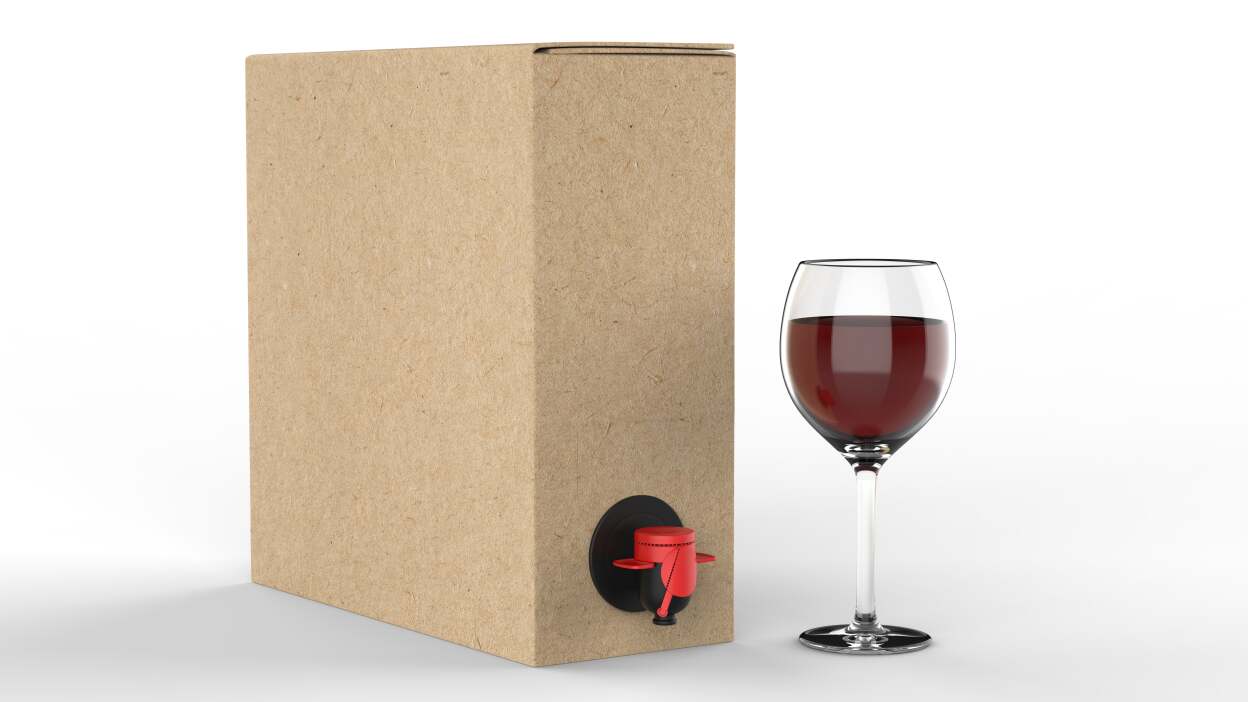A
bag-in-box is one way to store and transport liquids from place to place. Instead of utilizing a plastic pail, liquid product resides in a strong plastic bag inside of a corrugated fiberboard box. Usually, a spigot is also attached for easy dispensing of the product. The bag-in-box packaging as a whole is more compact for increased transportation and storage efficiency as well as easier use. In addition, the change from plastic pails to bag-in-box allows for an overall lower carbon footprint. Continue reading to learn the top 4 benefits of bag-in-box packaging and why the conversion from plastic pails is important.
1. Sustainable Manufacturing
The manufacturing of bag-in-box packaging is significantly more sustainable than plastic pails because it uses fewer resources. Most pails are made entirely from high-density polyethylene, which is a more rigid plastic that—according to the Environmental Protection Agency—is only recycled about 30% of the time. The production process of plastic uses petrochemicals as raw material and generates greenhouse gas emissions as it’s produced. Bag-in-box uses less plastic because only the bag part is made out of plastic, and it is a lower density type, reducing the overall amount of plastic used as well as emissions and waste.
Cardboard is a material with one of the lowest environmental impacts because it is 100% biodegradable and recyclable. More specifically, corrugated cardboard degrades within a year maximum. More than 75% of a bag-in-box package is corrugated and fully recyclable, renewable, and biodegradable. The other 25% is plastic, the recyclability of which depends on the geographical location and its collecting, sorting, and recycling infrastructure.
Thanks to sustainable manufacturing, fewer resources, and more recyclable materials, switching to bag-in-box cuts greenhouse gases by 52% and energy in production by 81%.
2. Efficient Transportation
Bag-in-box products are more convenient to ship and transport. Their rectangular-shaped package takes up less space and are able to easily be stacked together. A skid comprises 50 bag-in-box units but only 36 plastic pail units. This means more bag-in-box products can be shipped at once. As a result, CO2 emissions are lowered because fewer trucks are needed to transport bag-in-box products.
Similarly, for inbound freight, there can be 3,000 empty bags-in-boxes per skid and only 132 empty pails per skid. Empty bag-in-box packaging can be delivered flat and take up very little space. Using the same logic as above, this means there are fewer CO2 emissions due to needing fewer trucks to transport empty bag-in-box packages.
Another important note is the ability of bag-in-box packaging to protect the product as it is shipped, so it arrives undamaged and sealed. Compared to pails, the risk of damaged goods is lower for bag-in-box products. With pails, the rigid plastic can crack and bust, especially when the product is stacked too high and/or when a truck hits a bump on the road. This can also happen when pails lean forward if the driver needs to brake hard or if the bales are facing inward. Bag-in-box is more flexible due to the cardboard and plastic bag, which makes it harder for the packaging to break and product to leak during transportation. Further protection is provided by shrink wrap.
3. Storage Benefits
Once the product arrives at a warehouse or facility, it needs to be stored in the appropriate location to await shipment or for later use. This can be a challenge due to the small and tight spaces. Bag-in-box’s simple shape and size help minimize space requirements. When stacked, there is no dead space between the boxes. On the other hand, pails are usually circular. When stacked, there is a dead space because they do not fit evenly next to each other.
In total, there is a 39% reduction in cubic feet for bag-in-box compared to pails. Bag-in-box skids, for example, are 33 cubic feet for 200 gallons. Pail skids are 59 cubic feet for 180 gallons. That’s 20 more gallons of product in 26 less cubic feet for bag-in-box.
4. Ease of Use
Beyond just efficient transportation and storage, the rectangular shape of the bag-in-box makes it easier for employees to carry or haul the products to wherever they are needed. Once there, to help with dispensing, there are conveniently placed spigots that release the product when opened and block the product when closed. This means the product can be dispensed without the bag-in-box ever leaving the storage shelf or other flat surface. This is more convenient for customers because, unlike a pail, it does not require additional labor and strength to lift and pour the product out.
Other common issues with plastic pails include heavy surging or glugging when the product is poured out, as well as extra time and effort to scrape the sides to use all available products. With the bag-in-box spigot, customers can dispense a specific amount of product, eliminating overflow and extra mess. The spigot feature also allows a 99% evacuation rate, meaning nearly all the products inside the bag can be used without hassle, so customers receive the full value of what was purchased more easily.

BIB is the abbreviation of bag in box. The package is composed of flexible bag body made of various materials and external box made of cardboard. The bag body is equipped with a tap like switch, which is convenient to open and take out. The unique design can let the liquid flow out and prevent the air from entering, thus prolonging the storage time of products.
Six advantages of bag in box packaging:
First of all, the bags in box can adopt different material formula according to the performance requirements of different fields of liquid, so as to ensure the rationality, economy, safety and reliability of packaging.
The structure of the bag in box has good air tightness, which can provide satisfactory shelf life. It can still keep fresh for a long time after opening, with good quality and good oxygen permeability.


 中文简体
中文简体 英语
英语 西班牙语
西班牙语 俄语
俄语 葡萄牙语
葡萄牙语 法语
法语 德语
德语 意大利语
意大利语


















